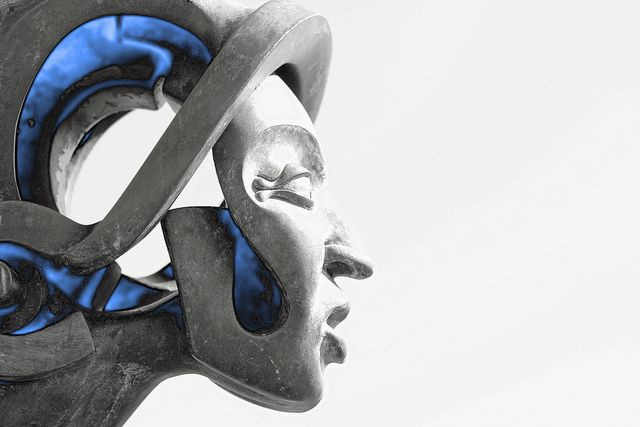How To Live Forever: Tech Startup Wants To Use Nanotechnology And Robotics To Transfer Consciousness Once We've Died

Humans have been trying to cheat death for centuries. But while this may have seemed like an impossible pipe dream, the evolution of technology is making it all the more possible that it’s only a matter of time before humans put their brains — or simply their consciousness — inside a robot body. Essentially, this could mean we’d live forever, and one company believes that time will come sooner than later.
Los Angeles-based startup Humai’s ultimate goal is to “extend and enhance human life,” Humai CEO and founder Josh Bocanegra told Medical Daily in an email. The company plans to do this by using artificial technology and nanotechnology to save data about a person’s “conversational styles, behavioral patterns, thought processes, and information about how [their] body functions from the inside-out,” according to the Humai website. Once it has collected everything it needs to know about who you were as a person, it can then begin building a robot body for your brain to live in after you die, effectively bringing you “back to life.”
“We want to use cryonics to preserve the brain and then use nanotechnology to repair the brain before implanting it to a bionic body,” Bocanegra said. “We have great ideas for how we can accomplish this but the details must be reserved until we conduct the research and run tests needed to come up with a strategy we're confident with. However, we aim to build the technology soon enough to bypass the death process and perform brain transplants before most of us die. ”
Bocanegra told Medical Daily brain resurrection is impossible right now because of current-day technology, “ but that's precisely why we're working on it. We need to solve this problem. We're also not talking about resurrection in the same way most people think of it as. We only think resurrection will be possible if someone is cryonically preserved after death. ”
But once the brain is brought back to life, how will it be able to control the new robot body? Speaking to Popular Science, Bocanegra said, “The artificial body functions will be controlled with your thoughts by measuring brain waves. As the brain ages we'll use nanotechnology to repair and improve cells. Cloning technology is going to help with this too.”
There are reasons to be skeptical of the whole process. For one, the team at Humai consists of just five employees: one works on artificial intelligence, two are researchers, another focuses on nanotechnology, and the fifth is an ambassador to investors and educators. “ Of course five people aren't going to solve the biggest problem in human life,” Bocanegra said. “Even if we were all scientists, we would still need the help of others. We're building a team of those who are educated in these fields, we're just organizing them around an overall mission.”
Another issue arises when you look at previous attempts to prolong or sidestep death. Robin Hanson, a futurist, economist, and author of The Age of Em: Work, Love, and Life When Robots Rule the Earth told Tech Insider that the field of artificial intelligence has already spent decades trying to develop programs that can have human-like conversations, yet progress has been slow. “Why would we expect one small group to make far more progress over the next five years than we’ve made over the last 50,” he said.
Bocanegra said he has so far only used his personal savings for this venture; however, Humai plans to look for investors within the next few months. If all goes according to plan, his venture will take a bit more than five years to complete. “If you’re alive in the next 30 years,” he said, “you may not have to die.”



























